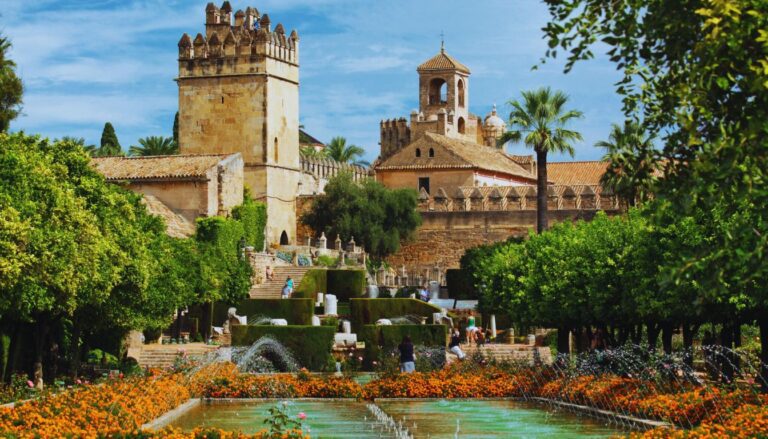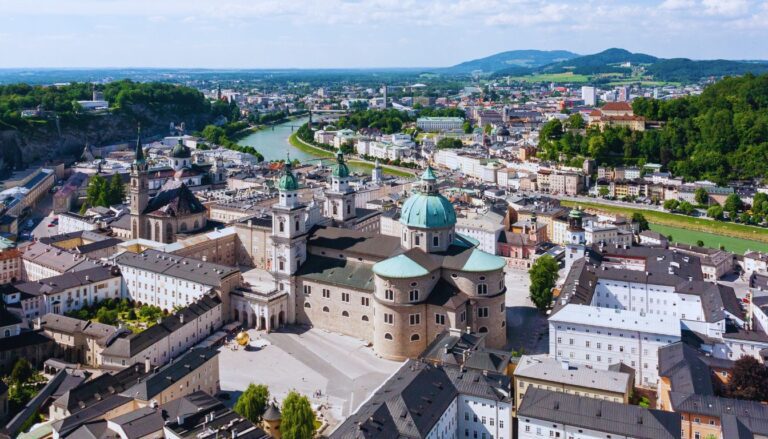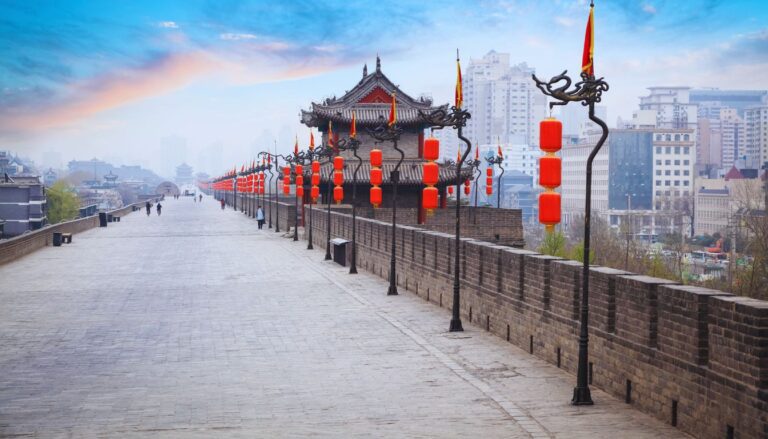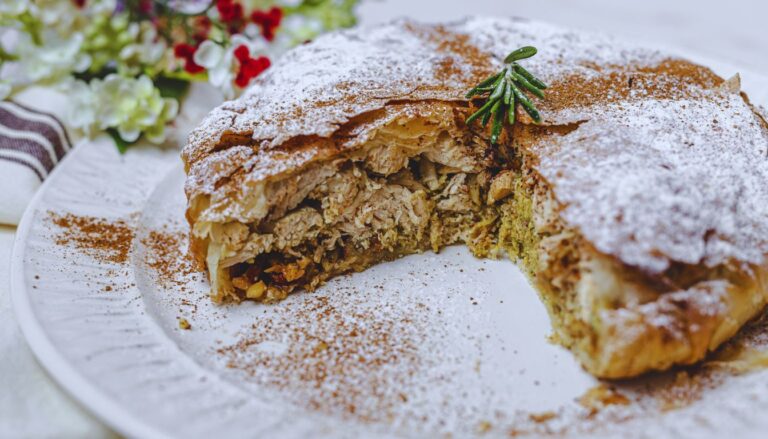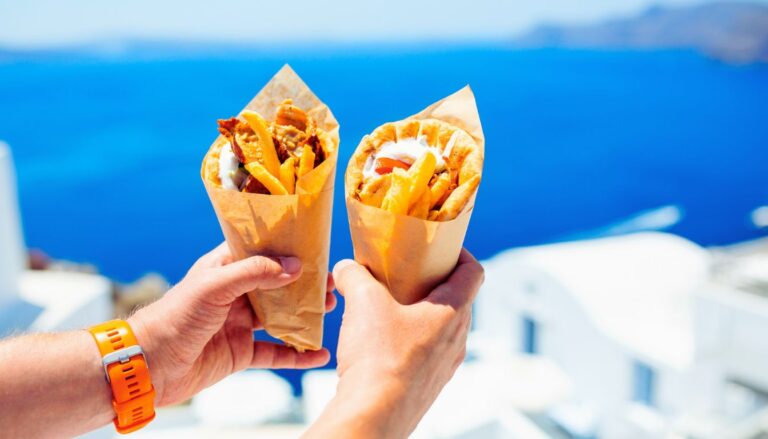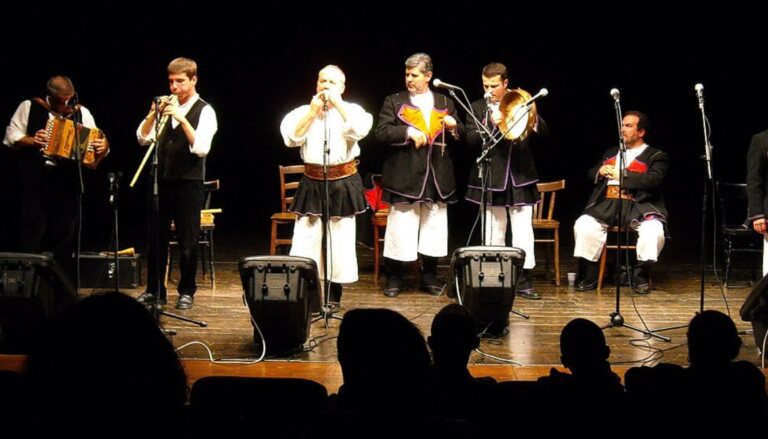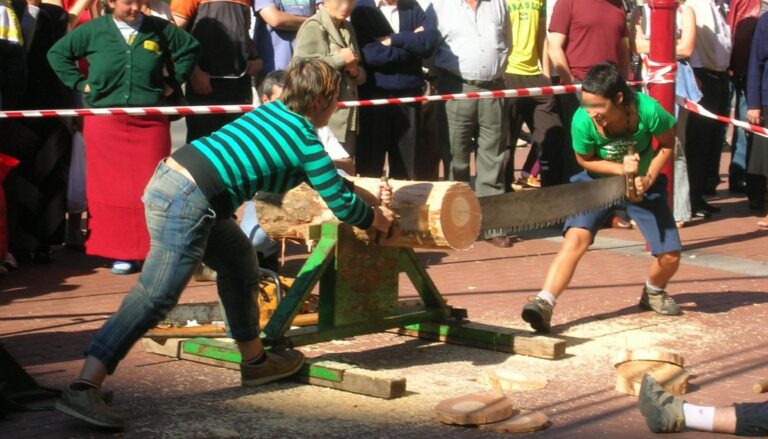When you think of Barcelona, images of unique, colorful buildings with curvy shapes and nature-inspired designs might come to mind. These eye-catching structures are part of a special style called Modernisme, which is Barcelona’s very own version of Art Nouveau. Modernisme isn’t just about pretty buildings – it’s a big part of what makes Barcelona, well, Barcelona!
Modernisme was more than just an architectural style. It was a whole artistic movement that swept through Catalonia, the region where Barcelona is located, in the late 19th and early 20th centuries. This movement touched everything from buildings and furniture to paintings and literature. But it’s in architecture where Modernisme really shines, leaving a lasting mark on Barcelona’s cityscape that continues to amaze visitors and locals alike.
In this article, we’ll take a journey through the winding streets of Barcelona to explore the wonders of Modernisme. We’ll learn about its origins, meet the brilliant minds behind it, and discover how this unique style has shaped one of Europe’s most vibrant cities. So, let’s dive in and uncover the magic of Modernisme!
Table of Contents
The Origins of Modernisme
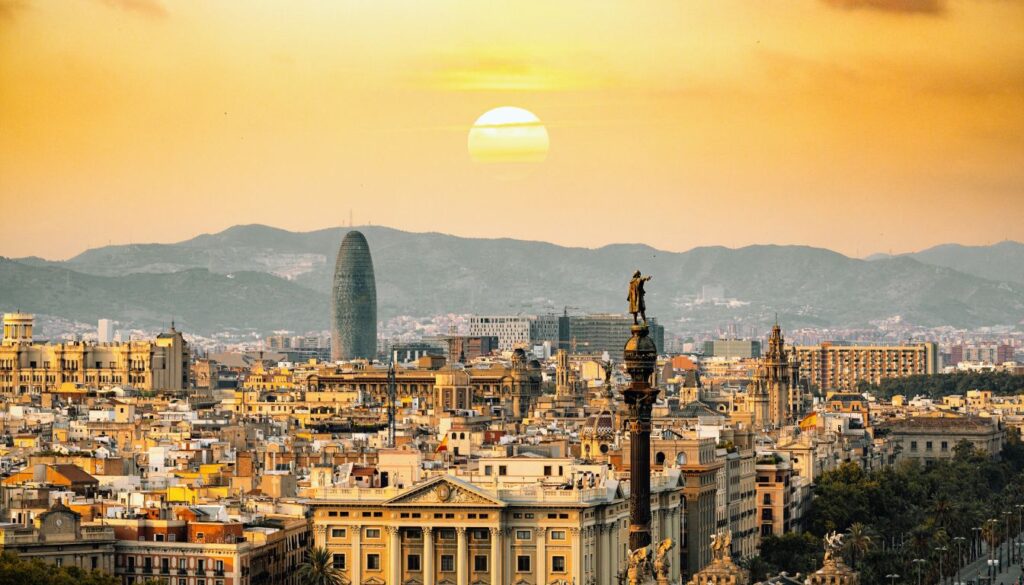
To understand Modernisme, we need to hop into our time machine and travel back to the late 1800s. Barcelona, like many European cities, was going through big changes. The Industrial Revolution was in full swing, and the city was growing fast.
Modernisme emerged around 1880 as a response to these rapid changes. It was a way for artists and architects to express their Catalan identity and push back against the boring, cookie-cutter styles that were popular at the time. They wanted to create something new and exciting that reflected the spirit of their thriving city.
The movement got its name from a magazine called “L’Avenç” (The Advance), which first used the term “modernisme” in 1884. It wasn’t just about looking cool – Modernisme had some big ideas behind it:
- Embracing nature: Modernista artists and architects loved using natural forms and organic shapes in their work.
- Celebrating Catalan culture: Many Modernista buildings include elements from Catalan history and folklore.
- Mixing art and function: Modernisme wasn’t just about making pretty things – it was about making everyday objects and buildings both beautiful and useful.
- Using new materials: Modernista architects weren’t afraid to experiment with new materials like iron and glass.
Modernisme wasn’t an isolated movement. It was part of a bigger European trend called Art Nouveau. But while Art Nouveau was happening in places like Paris and Vienna, Barcelona put its own unique spin on things with Modernisme.
The movement really took off thanks to the 1888 Barcelona Universal Exposition, a big fair that showed off the city to the world. This event gave local architects and artists a chance to showcase their talents and new ideas. From there, Modernisme spread like wildfire, transforming Barcelona’s streets and skyline.
Key Figures in Modernisme
Modernisme wasn’t the work of just one person – it was a team effort! Many talented architects, artists, and designers contributed to this exciting movement. Let’s meet some of the key players who helped make Modernisme what it is:
- Lluís Domènech i Montaner (1850-1923): Often called the “father of Modernisme,” Domènech i Montaner was both an architect and a teacher. He designed some of Barcelona’s most famous buildings, like the Palace of Catalan Music and the Hospital de Sant Pau. His style mixed medieval and Arab influences with modern techniques.
- Josep Puig i Cadafalch (1867-1956): Another big name in Modernisme, Puig i Cadafalch was known for his unique blend of Gothic and modern styles. He designed the Casa Amatller, which stands right next to Gaudí’s famous Casa Batlló.
- Josep Maria Jujol (1879-1949): While not as famous as some others, Jujol was a key collaborator of Antoni Gaudí. He added his own creative touch to many of Gaudí’s projects, including the colorful mosaics on Park Güell.
- Enric Sagnier (1858-1931): Sagnier designed over 300 buildings in Barcelona! His style was a bit more conservative than some other Modernista architects, but he played a big role in shaping the city’s look.
- Domènec Sugrañes i Gras (1878-1938): Another of Gaudí’s collaborators, Sugrañes i Gras worked on the Sagrada Família and completed some of Gaudí’s unfinished projects after his death.
While these architects were busy designing amazing buildings, other artists were contributing to Modernisme in different ways:
- Ramon Casas (1866-1932) and Santiago Rusiñol (1861-1931): These painters helped bring Modernisme to the world of fine art.
- Eusebi Arnau (1863-1933): A sculptor who created many of the decorative elements you see on Modernista buildings.
- Gaspar Homar (1870-1953): A furniture designer who brought the Modernista style into people’s homes.
Of course, we can’t talk about Modernisme without mentioning its most famous figure: Antoni Gaudí. But he’s so important that he deserves his own section!
Antoni Gaudí: The Master of Modernisme
When people think of Modernisme, one name usually comes to mind first: Antoni Gaudí. Often called the “Architect of God,” Gaudí is to Barcelona what Michelangelo is to Rome or Gaudi to Paris. His unique vision and incredible creativity pushed the boundaries of what was possible in architecture.
Antoni Gaudí i Cornet was born in 1852 in Reus, a town near Barcelona. From a young age, he showed a deep love for nature and a keen eye for its shapes and patterns. This love would later become a huge influence on his architectural style.
Gaudí studied architecture in Barcelona and graduated in 1878. Right from the start, his professors weren’t quite sure what to make of him. The school’s director famously said, “We have given this degree to a madman or a genius. Time will tell.”
Time indeed told, and it turned out Gaudí was definitely a genius! Here are some things that made his work so special:
- Nature-inspired forms: Gaudí believed that straight lines didn’t exist in nature, so why should they exist in buildings? He used curves and organic shapes in his designs, making his buildings look like they’ve grown out of the earth.
- Innovative techniques: Gaudí came up with new ways to design and build structures. He used models and experiments to test his ideas, some of which were way ahead of their time.
- Attention to detail: Every part of a Gaudí building, from the biggest arch to the smallest doorknob, was carefully designed.
- Use of color: Gaudí loved to use bright colors and shimmering mosaics in his work, often made from broken ceramic tiles (a technique called trencadís).
- Symbolism: Many of Gaudí’s buildings are filled with religious and natural symbols, adding layers of meaning to their beauty.
Some of Gaudí’s most famous works include:
- Casa Batlló: A colorful house that looks like it’s made of bones and scales
- Park Güell: A whimsical park filled with strange structures and mosaics
- Casa Milà (La Pedrera): An apartment building that looks like rolling waves of stone
But Gaudí’s magnum opus, the work that would consume the last years of his life, was the Sagrada Família. This incredible church is so important that it deserves its own section!
The Sagrada Família: Gaudí’s Unfinished Masterpiece
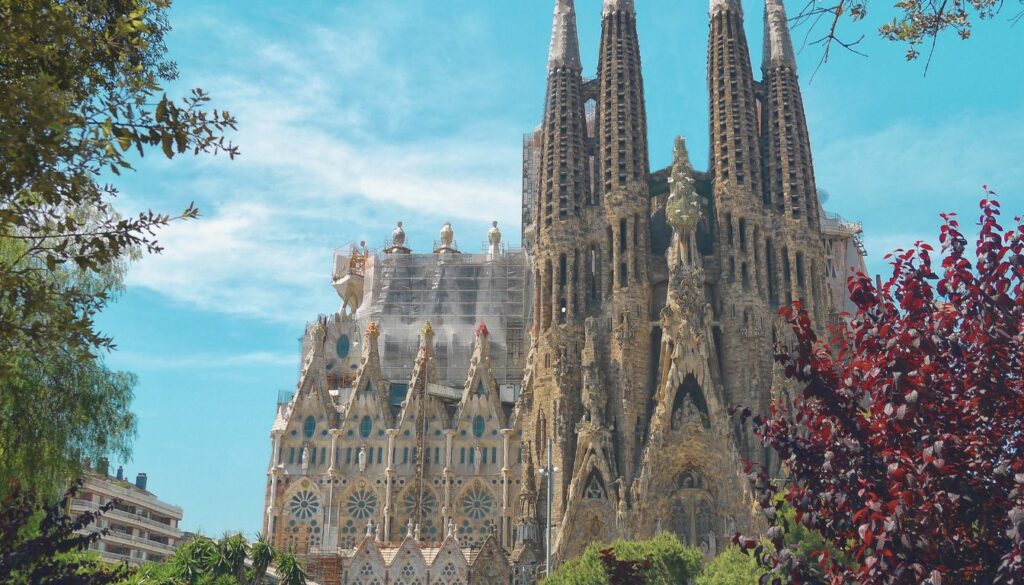
If there’s one building that sums up the spirit of Modernisme and the genius of Antoni Gaudí, it’s the Sagrada Família. This massive church, officially named the Basílica i Temple Expiatori de la Sagrada Família, is not just Barcelona’s most famous landmark – it’s one of the most extraordinary buildings in the world.
Work on the Sagrada Família began in 1882, but Gaudí didn’t take over as chief architect until 1883. Once he did, he completely reimagined the project, turning it into his life’s work. Here are some cool facts about this amazing building:
- Still under construction: Believe it or not, the Sagrada Família isn’t finished yet! Construction has been going on for over 140 years, and it’s expected to be completed in 2026.
- Nature-inspired design: The interior of the church looks like a stone forest, with columns that branch out like trees to support the roof.
- Symbolic architecture: Every part of the building tells a story. The three main facades represent the birth, death, and resurrection of Jesus.
- Unique towers: When finished, the church will have 18 towers. The tallest will be dedicated to Jesus and will make the Sagrada Família the tallest church building in the world.
- Light and color: Gaudí designed the windows and skylights to create stunning light effects inside the church at different times of day.
- Modern methods: While the design is Gaudí’s, modern architects are using computer modeling and 3D printing to help finish the job.
Gaudí was so dedicated to this project that he spent the last years of his life living in the church’s workshop. Sadly, he didn’t live to see it completed. In 1926, he was hit by a tram and died a few days later. At the time of his death, less than a quarter of the project was finished.
Despite wars, funding problems, and other setbacks, work on the Sagrada Família has continued. Today, millions of visitors come each year to marvel at this incredible building, even as construction continues around them.
The Sagrada Família is more than just a church or a tourist attraction. It’s a symbol of Barcelona, a testament to Gaudí’s vision, and a perfect example of how Modernisme blended art, nature, and faith into something truly unique.
Other Iconic Modernisme Buildings in Barcelona
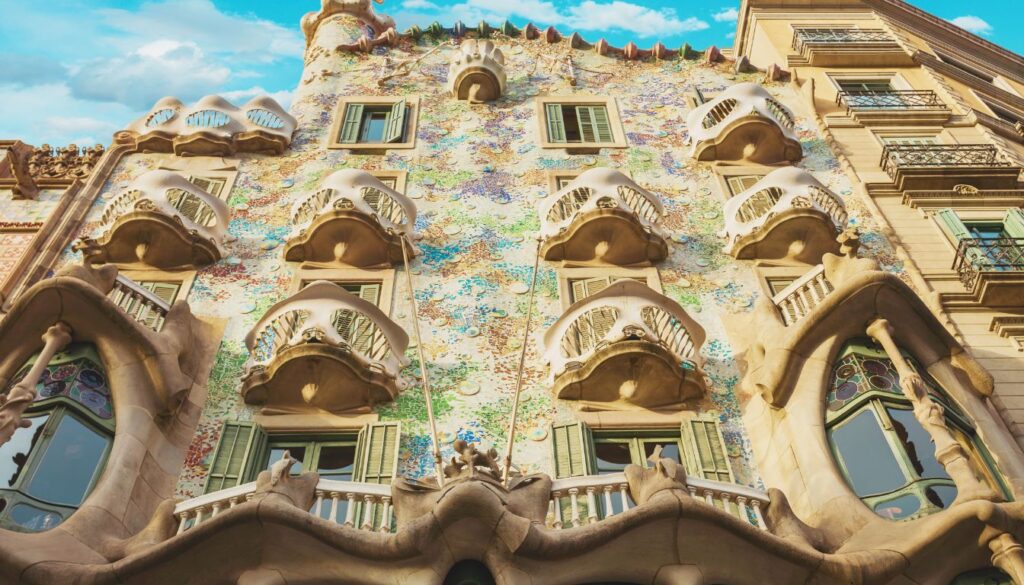
While the Sagrada Família might be the star of the show, Barcelona is full of other amazing Modernista buildings. Here are some must-see examples:
- Casa Batlló: Designed by Gaudí, this house looks like something out of a fairy tale. Its colorful facade is covered in what looks like scales, and its roof resembles a dragon’s back.
- Casa Milà (La Pedrera): Another Gaudí masterpiece, this apartment building is famous for its wavy stone facade and weird chimneys on the roof that look like soldiers.
- Palau de la Música Catalana: Designed by Lluís Domènech i Montaner, this concert hall is a feast for the eyes with its colorful mosaics and stained glass.
- Hospital de Sant Pau: Also by Domènech i Montaner, this former hospital looks more like a palace than a place for sick people. It’s now a museum and cultural center.
- Casa Amatller: Right next to Casa Batlló, this house was designed by Josep Puig i Cadafalch. It mixes Gothic and Modernista styles.
- Casa de les Punxes: Designed by Puig i Cadafalch, this building looks like a medieval castle plopped down in the middle of Barcelona.
- Park Güell: This quirky park by Gaudí is full of strange buildings, colorful mosaics, and great views of the city.
These buildings show how Modernisme wasn’t just one style, but a range of creative approaches. Each architect brought their own ideas and personality to their work, resulting in a city full of unique and beautiful structures.
Modernisme Beyond Architecture
While Modernisme is most famous for its buildings, it wasn’t just about architecture. The movement influenced all kinds of art and design in Catalonia. Here are some other areas where you can see the Modernista touch:
- Furniture and Interior Design: Modernista architects often designed furniture to go with their buildings. They used curvy shapes, natural motifs, and materials like wood and stained glass.
- Painting: Modernista painters like Ramon Casas and Santiago Rusiñol created works that captured the spirit of the times. They often painted scenes of modern life in Barcelona.
- Sculpture: Many Modernista buildings are decorated with sculptures. Artists like Eusebi Arnau created figures and decorative elements that blended with the architecture.
- Graphic Design: Modernisme influenced poster art, book design, and advertising. Artists created eye-catching designs using flowing lines and natural forms.
- Ceramics: Colorful ceramic tiles and mosaics are a big part of Modernista style. The broken tile technique called trencadís, popularized by Gaudí, became a Modernista trademark.
- Wrought Iron: Many Modernista buildings feature beautiful ironwork in gates, railings, and decorative elements.
- Stained Glass: Colorful stained glass windows and lamps were popular in Modernista design, adding light and color to buildings.
- Literature: Writers like Joan Maragall brought Modernista ideas into Catalan literature, focusing on themes of nature and Catalan identity.
This wide-ranging influence shows how Modernisme was more than just an architectural style – it was a complete artistic movement that touched many aspects of life and culture in Catalonia.
Modernisme’s Influence on Barcelona’s Urban Landscape
Modernisme didn’t just create individual beautiful buildings – it changed the whole look and feel of Barcelona. Here’s how:
- Eixample District: Many Modernista buildings are in the Eixample, a planned expansion of Barcelona designed in the late 1800s. The wide, tree-lined streets of this district became the perfect showcase for Modernista architecture.
- Passeig de Gràcia: This grand boulevard became a sort of outdoor museum of Modernisme, with several famous buildings like Casa Batlló and Casa Milà.
- Skyline: The towers of the Sagrada Família have become an iconic part of Barcelona’s skyline, visible from many parts of the city.
- Parks and Public Spaces: Modernista design principles influenced the layout and decoration of parks like Park Güell, adding whimsy and color to the city’s green spaces.
- Street Furniture: Even smaller elements like lampposts, benches, and metro station entrances got the Modernista treatment, adding artistic touches to everyday objects.
- Color and Texture: Modernisme brought more color and varied textures to Barcelona’s streets, moving away from the plain facades of earlier styles.
- Tourism Draw: The unique look of Modernista buildings has become a major attraction for tourists, shaping how the city markets itself to visitors.
By transforming so much of the city’s built environment, Modernisme helped give Barcelona its unique character. It’s not just about individual buildings, but how they all come together to create a cityscape unlike any other in the world.
Preserving Modernisme: Barcelona’s Cultural Heritage
As Modernisme buildings age, preserving them has become an important task for Barcelona. Here’s how the city is working to keep its Modernista heritage alive:
- Restoration Projects: Many Modernista buildings have undergone careful restoration to repair damage and preserve their unique features. For example, Casa Batlló was extensively restored in the early 2000s to bring back its original colors and details.
- UNESCO World Heritage Sites: Several Modernista buildings, including works by Gaudí, have been designated as UNESCO World Heritage Sites. This helps protect them and provides resources for their preservation.
- Modernisme Route: The city has created a “Ruta del Modernisme” (Modernisme Route) that guides visitors through the most important Modernista sites in Barcelona.
- Museums and Education: Places like the Gaudí House Museum in Park Güell help educate people about Modernisme and its importance to Barcelona’s history.
- Adaptive Reuse: Some Modernista buildings have been repurposed for new uses while preserving their architectural features. For example, the former Hospital de Sant Pau is now a cultural center and museum.
- Technical Challenges: Preserving Modernista buildings can be tricky because of their unique designs and materials. Experts are constantly developing new techniques to address these challenges.
- Balancing Tourism and Preservation: With millions of visitors each year, Barcelona has to balance making Modernista sites accessible to tourists while also protecting them from wear and tear.
Preserving Modernisme is not just about maintaining old buildings – it’s about keeping an important part of Barcelona’s cultural identity alive for future generations.
Modernisme and Tourism in Barcelona
Modernisme has become one of Barcelona’s biggest tourist draws. Here’s how it impacts tourism in the city:
- Major Attractions: Modernista buildings like the Sagrada Família and Park Güell are among the most visited sites in Barcelona, attracting millions of tourists each year.
- City Identity: Modernisme has become a key part of Barcelona’s brand, featured prominently in tourism marketing materials.
- Guided Tours: Many companies offer specialized tours focused on Modernisme and Gaudí’s works.
- Economic Impact: Tourism related to Modernista sites brings significant revenue to the city, helping fund preservation efforts.
- Souvenirs and Merchandise: Modernista-inspired souvenirs, from miniature Sagrada Família models to trencadís-style jewelry, are popular among tourists.
- Photography and Social Media: The unique, photogenic qualities of Modernista architecture make these sites popular on social media, further promoting Barcelona as a destination.
- Challenges: The popularity of Modernista sites has led to challenges like overcrowding and the need to balance tourism with local residents’ needs.
While tourism brings many benefits, it also presents challenges in terms of preservation and maintaining the authenticity of these historic sites.
The Legacy of Modernisme in Contemporary Architecture
Although the Modernisme movement ended in the early 20th century, its influence can still be seen in contemporary architecture, both in Barcelona and around the world:
- Organic Architecture: Gaudí’s nature-inspired forms have influenced architects like Santiago Calatrava, who creates buildings with flowing, organic shapes.
- Sustainable Design: Modernisme’s integration of natural forms and local materials aligns with modern sustainable architecture principles.
- Catalan Architecture: Contemporary Catalan architects often reference Modernisme in their work, keeping the spirit of innovation alive.
- Decorative Elements: The use of colorful ceramics and intricate details in modern buildings often echoes Modernista techniques.
- Blending Old and New: Many modern buildings in Barcelona incorporate Modernista elements as a nod to the city’s architectural heritage.
- Experimental Techniques: Gaudí’s innovative use of materials and structures continues to inspire architects to push boundaries.
- Cultural Identity: Modernisme showed how architecture could express cultural identity, an idea that remains important in many parts of the world.
The legacy of Modernisme goes beyond specific design elements. It represents a spirit of creativity, innovation, and cultural expression that continues to inspire architects and artists today.
Conclusion: Modernisme’s Enduring Impact
Modernisme was more than just an architectural style – it was a cultural phenomenon that transformed Barcelona and left a lasting mark on the world of art and architecture. From the towering spires of the Sagrada Família to the whimsical curves of Casa Batlló, Modernisme gave Barcelona a unique visual identity that continues to captivate visitors from around the globe.
The movement’s emphasis on nature, craftsmanship, and cultural identity resonates even in our modern world. As we face challenges like sustainability and maintaining cultural heritage in a globalized world, the principles of Modernisme offer inspiration and lessons.
Today, Barcelona’s Modernista buildings stand as a testament to human creativity and the power of art to shape a city. They remind us that architecture can be more than just functional – it can be a form of expression, a celebration of culture, and a source of wonder and joy.
As Barcelona continues to evolve, Modernisme remains at its heart, a brilliant reminder of a time when artists and architects dared to dream big and turn their wildest imaginings into reality. Whether you’re a first-time visitor or a lifelong resident, the magic of Modernisme never fails to inspire and amaze.
Discover the must-visit cultural destinations of Catalonia
To learn more about Modernisme, you can visit the Museu Nacional d’Art de Catalunya



